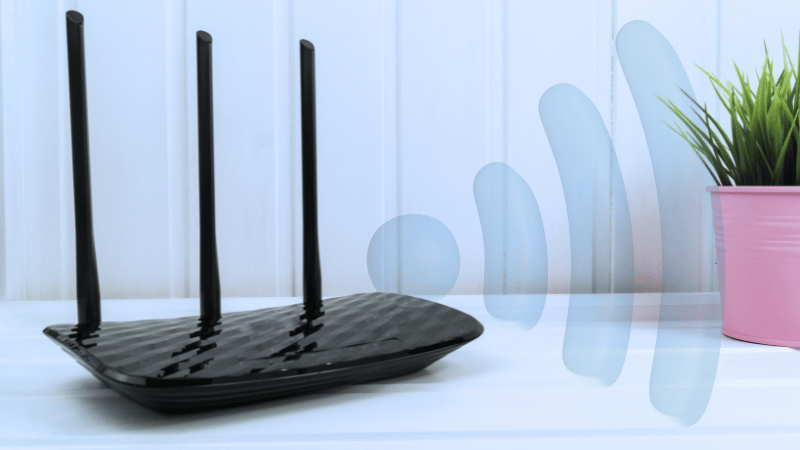With the growing awareness of Electromagnetic Field (EMF) sensitivity, some guests are seeking accommodations that minimize EMF exposure. EMF sensitivity, also known as Electromagnetic Hypersensitivity (EHS), involves a range of symptoms triggered by exposure to electromagnetic fields, such as those emitted by Wi-Fi routers, cell phones, and other electronic devices. By taking steps to reduce EMF levels in your Airbnb, you can attract more guests, provide a unique selling point, and create a safe, comfortable environment for those with EMF concerns. Here’s how:
How to Make Your Property EMF-Safe for Sensitive Guests
1. Offer Wired Internet as an Alternative to Wi-Fi
While Wi-Fi is a convenience many guests expect, some people may need a low-EMF environment.
- Install Ethernet Connections: Provide wired Ethernet connections in key areas like the living room, bedroom and office spaces. This allows guests to connect to the internet without relying on Wi-Fi.
- Wi-Fi Control: Offer guests the option to turn off the Wi-Fi at night or upon request. You could provide instructions or a simple switch that allows them to disable the Wi-Fi when it’s not needed.
- Farady Cage: You can purchase a Wifi Router Shield for your router and for your smart meter.
2. Use Low-EMF Lighting and Appliances
The type of lighting and appliances you use can impact EMF levels.
- Lighting: Opt for low-EMF LED bulbs or incandescent bulbs instead of CFLs (compact fluorescent lights), which can emit higher EMFs.
- Appliances: Choose low-EMF appliances when possible. Avoid appliances with constant wireless connectivity (like smart refrigerators) unless they can be disconnected from the network when not in use.
3. Minimize Wireless Devices
Reducing the number of wireless devices can significantly lower EMF exposure.
- Limit Smart Devices: Avoid smart home devices that constantly emit wireless signals, such as smart thermostats, speakers or lighting systems. If you do use them, ensure they can be turned off or disconnected.
- No Wireless Gadgets in Bedrooms: Remove wireless devices from bedrooms, including alarm clocks, speakers and smart TVs. Instead, offer simple, non-wireless alternatives.
4. Shield EMF Sources
- EMF Shielding Paint: This paint can block external EMFs from nearby cell towers or power lines. Although, at the same time, this emf shielding paint can seal in the emf’s from devices you use in your home.
- Shielding Curtains: There are EMF shielding curtains or window films that one can purchase to reduce exposure from outside sources.
5. Shungite and Orgonite
- Shungite: Shungite is a black, carbon-rich stone. Shungite has been known to absorb and neutralize EMFs due to its carbon structure. Shungite can be placed near electronic devices like computers, routers and phone or be worn as a jewelry.
- Orgonite: Orgonite is a composite material made from resin, metal shavings and often quartz crystals. Orgonite is believed to transform negative energy, including EMFs, into positive energy. It can be placed around electronic devices to neutralize EMF emissions, placed around the home or office to create a protective field or worn on the body to protect EMF exposure.
6. Provide EMF-Free Sleeping Areas
Sleep is crucial for health, and many guests with EMF sensitivity are particularly concerned about their sleeping environment.
- Create an EMF-Free Zone: Designate one or more bedrooms as EMF-free zones. Ensure these rooms have no Wi-Fi, no smart devices and minimal electronic equipment.
- Use Analog Clocks: Provide simple, battery-operated analog clocks instead of digital ones, which can emit EMFs.
7. Control the Use of Smart Meters
Smart meters, used to monitor electricity, water, or gas usage, emit radiofrequency radiation.
- Discuss Options with Utility Providers: If possible, request that your utility company replaces smart meters with traditional analog meters. If this isn’t feasible, consider shielding the area around the meter to reduce its impact.
- Faraday Cage: You can purchase a smart meter shield to prevent emfs from your smart meter.
8. Reduce EMF Exposure from Power Sources
High EMFs can also come from power sources like electrical panels, wiring and large appliances.
- Distance from Electrical Panels: Position sleeping areas and high-traffic rooms away from electrical panels, circuit breakers or large electrical appliances.
- Turn Off Circuit Breakers: Turn off specific circuit breakers at night to reduce EMF exposure, especially in bedrooms.
9. Inform and Educate Guests
Transparency is key to attracting and satisfying guests with EMF sensitivity.
- Highlight EMF Safety Measures: Clearly state in your listing that you have taken steps to minimize EMF exposure. This can include mentioning wired internet options, low-EMF appliances and designated EMF-free zones.
- Provide an EMF Guide: Offer a guide in your listing or welcome book that explains how guests can further reduce EMF exposure during their stay, such as by unplugging devices or turning off Wi-Fi.
10. Engage with Guests
Lastly, be open to communication with guests who have specific EMF concerns.
- Customization: Allow guests to customize their stay by choosing to disable certain devices or services, such as Wi-Fi or smart home features.
- Feedback: Encourage feedback from guests on how to improve the EMF safety of your property. This can help you continually enhance your listing to meet the needs of sensitive guests.
By making these thoughtful adjustments, you can create an Airbnb that is not only EMF-safe but also attractive to a growing market of health-conscious travelers. Reducing EMF exposure not only caters to those with EMF sensitivity but also provides a healthier, more comfortable environment for all guests, setting your listing apart in a competitive market.

